
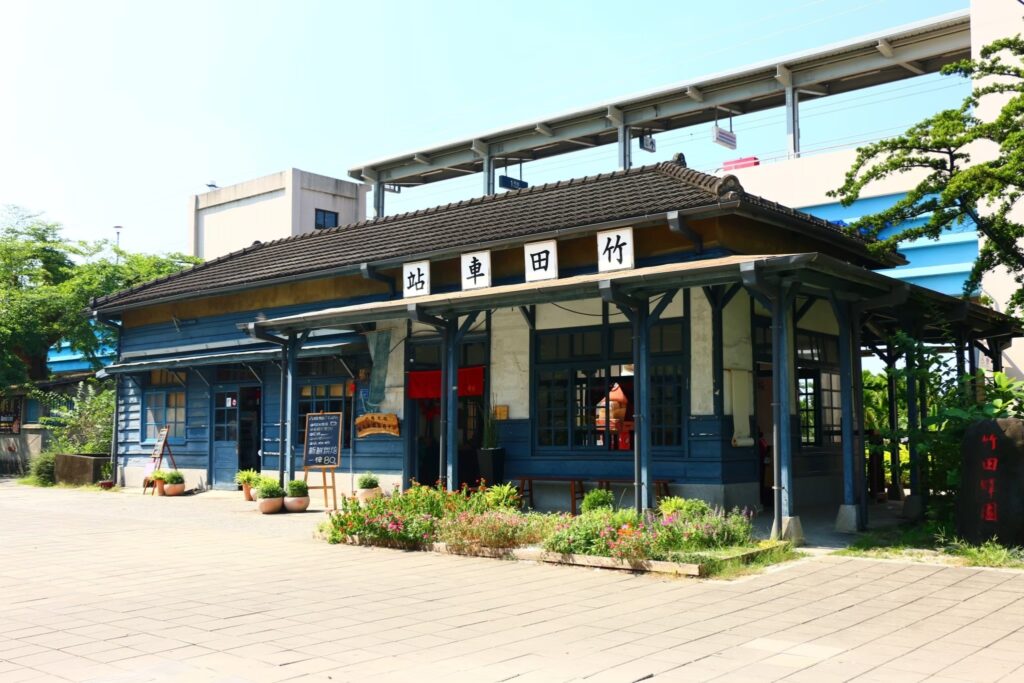
Jhutian Township, located in the central part of Pingtung County, Taiwan, is part of the Six Piles region. It borders Linluo Township to the north, Neipu and Wanluan Townships to the east, Wandan Township to the west, and Chaozhou Township to the south. The majority of its residents are Hakka, accounting for about 80% of the population. Jhutian Township lies in the heart of the Pingtung Plain, with the East Donggang River and Ailiao Creek running through it. The terrain is flat, and the climate is tropical monsoon. Agriculture is the primary industry for the residents.
Jhutian Township was awarded the honor of “2019 Top Ten Hakka Townships” by the Ministry of Transportation and Communications Tourism Bureau. The township combines a variety of tourism resources, including a century-old station, traditional brewing industries, orchid and lemon farming, Zhongyi Pavilion, Lao Fu Zi murals, and the Dadao Port ruins. Through food and agriculture experiences, Jhutian also promotes the local use of ingredients in the food and beverage industry, emphasizing a slow-living and slow-food lifestyle. It aims to provide visitors with an authentic and immersive experience, allowing them to appreciate and recognize the friendly atmosphere of Jhutian, ultimately striving to become part of the International Cittaslow Alliance. This vision includes environmental protection, cultural heritage promotion, improved quality of life, and the encouragement of local ingredient usage.
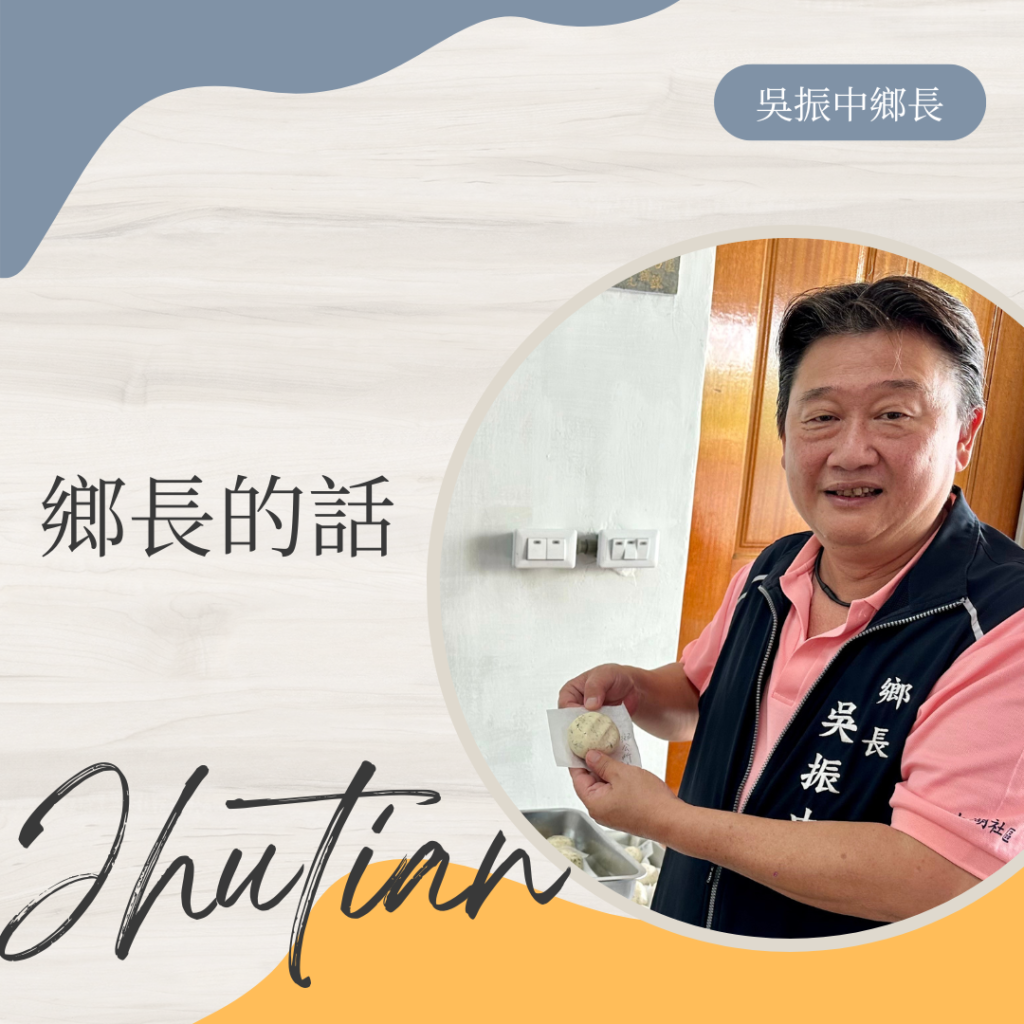
Jhutian Township is located in the central area of the Pingtung Plain, within the Zhongdui region of the Twelve Hakka Townships in the Six Piles area. The township consists of 15 villages, 11 of which are Hakka villages and 4 are Minnan villages. With fertile soil and abundant resources, the area boasts a rich natural environment, a simple and honest local culture, and a moist climate with a high annual rainfall. The township’s population is approximately 16,000, and it maintains a rural character with major agricultural products including betel nuts, lemons, and bananas, while the flower industry is dominated by Oncidium orchids.
In 2019, Jhutian Township was honored with the “Top Ten Hakka Townships in Taiwan” award by the Ministry of Transportation and Communications Tourism Bureau and received the Taiwan Town Brand Award – Green Environment Award, commissioned by the Ministry of Economic Affairs. In 2020, the township received the Silver Award in the Taiwan Town Brand Award, and in 2022, it was honored as a member of the International Cittaslow Network. Agriculture remains the main industry here, and the hardworking residents embody simplicity and diligence. The area is rich in diverse attractions, including local food, coffee, brewing industries, art workshops, and agricultural product processing. It is also known for its respect for multicultural coexistence.
Jhutian has abundant tourism resources, including the historically significant Jhutian Station, traditional brewing industries, orchid and lemon farming, Zhongyi Pavilion, Lao Fu Zi murals, and Jingzi Pavilion. Through food and agriculture experiences, local food and beverage businesses use local ingredients to promote environmental sustainability and social responsibility.
Currently, Jhutian is actively planning infrastructure developments such as transportation improvements and the establishment of a cultural library. By transforming sports parks into health industry and shopping areas, the township also aims to improve connectivity with satellite cities, attract young people to return home for employment, and integrate the Cittaslow philosophy to create a “slow food, slow travel, good life” residential town.

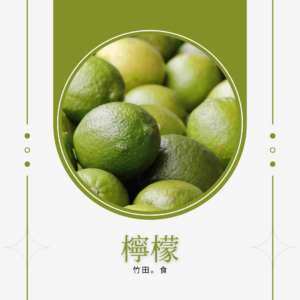
Lemon
Over 40 years ago, Jhutian Township introduced lemon cultivation, and it has since become one of Taiwan’s key lemon-producing areas. Currently, the total planting area exceeds 120 hectares, with approximately 90% certified for traceability in production and sales. Thanks to the township’s unique natural climate and geographical advantages, as well as the farmers’ careful cultivation, the lemons produced in Jhutian are renowned for their thin skin, abundant juice, and rich fragrance. This high-quality production has successfully attracted attention from manufacturers, leading to contracted production agreements with farming groups. Additionally, Jhutian has partnered with the brand “Guai Guai” to launch a new flavor, “Honey Lemon” rice crackers, expanding the range of product flavors.
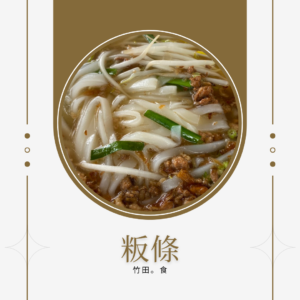
Ban Tiau (Hakka Rice Noodles)
Ban Tiau is a representative dish of Hakka culinary culture. In northern Hakka villages, it is referred to as “Ban Tiau,” while in southern Hakka settlements, it is called “Mian Pa Ban.” This popular and humble dish is widely loved in many Hakka communities, especially in Pingtung County, where each town and village has its own unique variation of the dish. In Jhutian Township, several noodle shops make their own crispy shallots, which are paired with braised pork, chives, and bean sprouts, then served in a rich and flavorful broth, creating a delicious and aromatic dish.
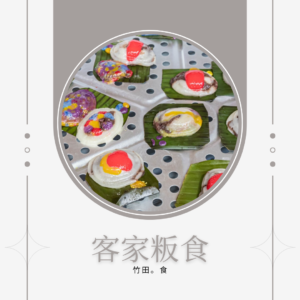
Hakka Rice Cakes (Ban Shi)
In Hakka culture, all rice-based snacks are collectively referred to as “Ban,” which is also known as “Gue” in Taiwan. The making and consumption of these rice cakes play a significant role in the Hakka community’s seasonal celebrations and festivals. They are an essential part of offerings for religious ceremonies and ancestral worship. Different types of “Ban” are made for various occasions. For example, “Ci Ba” (sticky rice cake) is eaten during weddings and funerals, “Ban Yuan” (rice dumplings) is enjoyed during the Lantern Festival, “Ai Cao Ban” (mugwort rice cake) is made for Qingming Festival to honor ancestors, “Yu Ban” (taro rice cake) for Mid-Autumn Festival, “Tian Ban” (sweet rice cake) symbolizing progress on New Year’s Eve, “Fa Ban” (prosperity rice cake) for wishing wealth, and “Luo Bo Ban” (radish rice cake) for good luck. Each type of rice cake has its own symbolic meaning, showcasing the diversity and richness of Hakka rice cake culture.
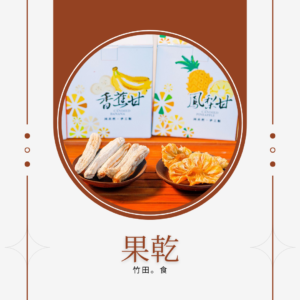
Dried Fruits
Local products such as lemons and bananas from Jhutian can be dried, making them easy to store, carry, and consume. These dried fruits are perfect for a quick energy boost during travel or busy times, serving as a convenient and nutritious snack.
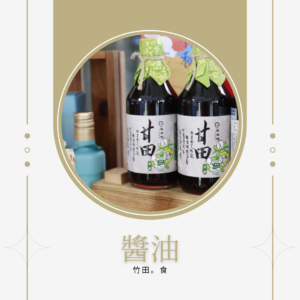
Soy Sauce
Jhutian is home to several unique soy sauce factories, some of whose products have even received international awards. Some factories collaborate with local farmers to contract grow soybeans, black soybeans, and wheat. This partnership not only yields high-quality crops but also carries a deep emotional connection to the land. Under the bright sun of Pingtung, these soy sauce factories produce authentic, high-quality Taiwanese soy sauce, showcasing a strong commitment to both the land and traditional craftsmanship.

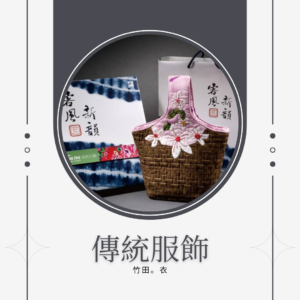
Traditional Clothing
Ms. Liu Qiuqin of Yunzhu Workshop creates Hakka clothing with an innovative design concept, incorporating indigo dyeing and Hakka floral fabrics into modern fashion. The design of classic accessories makes Hakka clothing more fashionable and international.
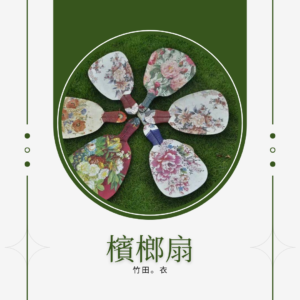
Betel Nut Fan
The “Betel Nut Fan” is a fan made from the sheath of betel nut leaves. In the past, farmers often collected discarded betel nut leaf sheaths and crafted them into fans, providing cooling relief while conserving energy. The betel nut tree-dense Liu Dui area (including Jhutian) actively promotes this craft, allowing people to enjoy the fun of painting while practicing the concept of environmental sustainability.
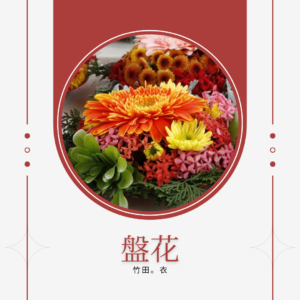
Basket Flowers
“Basket Flowers” are a unique floral arrangement used in the Hakka villages of the southern Liu Dui area during religious offerings. Traditionally, the flowers used for basket flowers are commonly sourced from Hakka folk plants such as the New Year flower, magnolia, sweet osmanthus, tree orchid,桂花, round rice cake flower (globe amaranth), and gardenia (camellia). These flowers are not only commonly found in Hakka settlements or family gardens but also serve as symbolic flowers representing the Liu Dui Hakka villages. Basket flowers embody the deep faith that the Hakka people have for their ancestors and deities, while also showcasing their wisdom in sourcing materials locally and their frugality and simplicity.

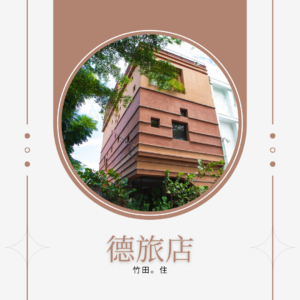
De Lyu Inn
Formerly known as Lao De Xing Rice Factory, De Lyu Inn is the first bed and breakfast in Jhutian, Pingtung. The third-generation children transformed the childhood memories of the grain warehouse building into a high-quality lodging space. After three years of renovation and planning, the architectural style retains the old red brick walls, while incorporating many green plants into the overall space. This design not only preserves the glory of Jhutian’s rice industry but also embraces modern design concepts to achieve the beautiful philosophy of “environmental sustainability.”

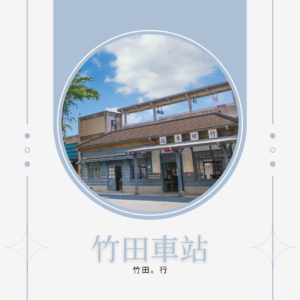
Jhutian Railway Station
Built in 1939, Jhutian Railway Station is a Japanese-style wooden station located within the current station area. The station complex includes a waiting room, office, signal house, tea room, night duty room, and storage. The station area retains facilities such as an oil storage room, ancient well, and bathhouse, making it an important landmark in Jhutian Township.

Xishe Railway Station
Jhutian Xishe Railway Station has a long history and is an important witness to the development of Taiwan’s railway system. The station area features buildings and facilities that reflect Hakka cultural characteristics, fully showcasing the unique historical background and cultural atmosphere of the area. It is an ideal location for exploring the history and culture of Jhutian Township.
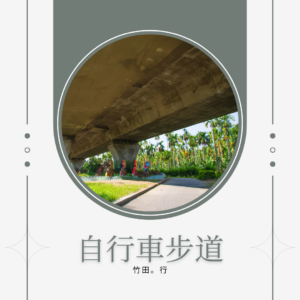
Bicycle Path
Some of the bicycle paths in Jhutian Township are built along the railway tracks, allowing cyclists to occasionally ride alongside trains, which adds a unique touch to the experience. The Jhutian bicycle path starts from Xishe Station and stretches for about 44 kilometers. Along the way, there are many scenic spots, with the most famous being Jhutian Station Garden (Jhutian Railway Station) and Liudui Zhongyi Temple. Additionally, you can visit Meilun Old Street, Daxing Rice Mill, and other sites. This route not only offers a chance to enjoy the quaint charm of the small town but also takes you through rural fields, providing an immersive experience of Hakka history and culture.


Liudui Zhongyi Temple
The Zhongyi Temple is dedicated to honoring the martyrs who sacrificed their lives to protect their homes and families during the conflicts of the Liudui Hakka ancestors. It stands as a spiritual fortress for the Hakka people in the Liudui region. In the 60th year of the Kangxi Emperor’s reign (1721), during the Zhu Yigui Rebellion, the Hakka people in southern Taiwan formed a defensive system by uniting and drawing boundaries for their settlements. After the turmoil was quelled, the volunteer army was disbanded, and the locations of the various camps, including the vanguard, middle, front, rear, left, and right camps, were named the “Six Piles” (Liudui). Even after the Japanese took control of Taiwan in 1895, the Hakka volunteer army in Liudui continued their fierce resistance, marking a heroic chapter in history that lasted for 174 years.
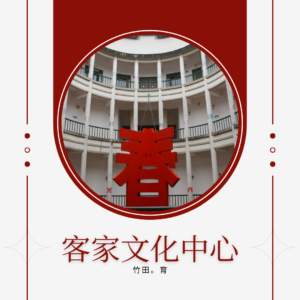
Hakka Culture Center
The Pingtung County Hakka Culture Center is located behind the Zhongyi Temple and was opened in November 2001. The architectural design of the center is modeled after the traditional “tulou walled houses” of the Hakka people who migrated from northern China to the south, making it the first Chinese-style building of its kind in Taiwan. The center houses a rich collection of over 600 Hakka cultural artifacts, serving as a valuable resource for the study of the Liudui Hakka culture and heritage. In addition to preserving and showcasing these precious collections, the center actively promotes various Hakka cultural activities, committed to the preservation and dissemination of Hakka culture.
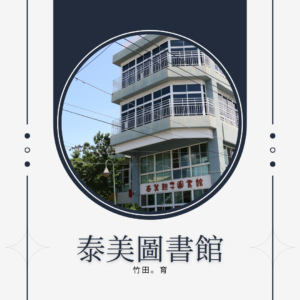
Taimi Library
The Taimi Education Foundation was established in 1999 in memory of the late couple, Lin Jian-tai and Liang Hui-mei. The establishment of the library aims to eliminate the inherent inequality caused by poverty, providing every child with equal educational opportunities. It is hoped that each child will find their greatest passion in life and lead a happy and fulfilling life.
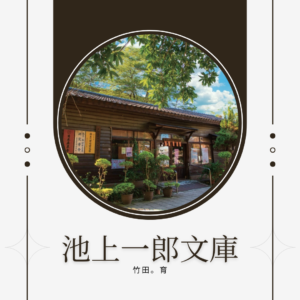
Ishigami Ichiro Library
Ishigami Ichiro (1911-2001) served as the director of the Kaohsiung Prefecture Jhutian Field Hospital (now renovated into Jhutian Elementary School) in 1943. During his two years in Taiwan, he provided free medical care to the local people, earning the gratitude of the Hakka community. In his late nineties, Ishigami donated his lifetime collection of Japanese books, newspapers, and magazines, as well as one million yen, to Jhutian Township. The local community worked to transform an old warehouse next to the Jhutian Train Station into the “Ishigami Library.” Currently, the library holds more than 10,000 volumes and is regarded as the southernmost Japanese library in Asia.

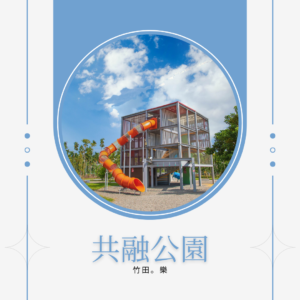
Jhutian Inclusive Park
The Jhutian Inclusive Playground features a standout 8-meter-high large Hakka maze play structure, complete with a 6.5-meter-long slide and a kaleidoscope designed with traditional Hakka paper-cutting patterns. The playground also includes a water play area, an inclusive sandpit, a multi-challenge swing zone, and the first-ever family-friendly grass track for balance bike racing in Pingtung.
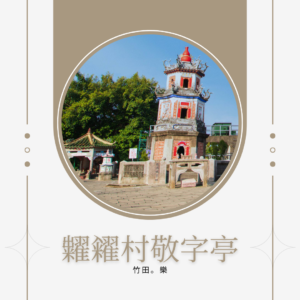
Dadi Village Jingzi Pavilion
Dadi Village (pronounced as “糶ㄊ一幺ˋ” for selling rice and “糴ㄉ一ˊ” for buying rice) has a deep historical significance behind its name. In the past, Jhutian was a rice storage hub in southern Taiwan and a key trading center for grains and rice in the Six Piles Hakka region. The village used the Longjing Creek waterway to connect to Donggang Creek, where large vessels would transport rice to mainland Tangshan. A river port, known as “Dada Harbor,” was established in Dadi Village. Today, the historical site remains as a water gate, with a giant old banyan tree by the shore. Beneath the tree stands a hexagonal pavilion-style temple dedicated to the local Earth God (福德正神), known as “Dada Village Grain Piles.” This temple has long provided blessings for the safety of those crossing the river, ensuring the prosperity and peace of the area.
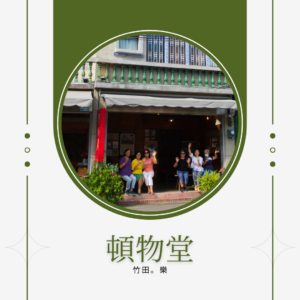
Dunwu Hall
Dunwu Hall Tea and Cultural Life Center focuses on tea, tea ware, tea ceremonies, and various tea-related experiences. It offers a wide selection of teas, including Pu-erh tea and Taiwan’s six major tea varieties: Oolong, Green, White, Blue, Red, and Black. The space blends Hakka, Chinese, and Japanese styles, as well as cultural and artistic elements, creating an environment where tea drinking becomes not only a lifestyle but also a remedy for modern wellness and a way to soothe the mind and spirit.
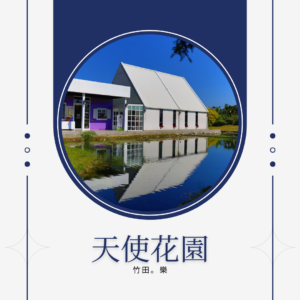
Angel Garden
Angel Garden Leisure Farm spans a vast area, with its white chapel-style restaurant exuding an exotic atmosphere. In conjunction with the existing “Jhutian Orchid Station,” Angel Garden incorporates local ingredients—such as lemons and vegetables—into its dishes. The farm also uses its self-grown orchids as decorations. Offering educational exhibits and interactive experiences, Angel Garden is a tourism destination centered around orchids, enhancing visitors’ understanding of the orchid industry. Guests can immerse themselves in a sea of orchids, experiencing the scents of flowers, fruits, and vegetables.
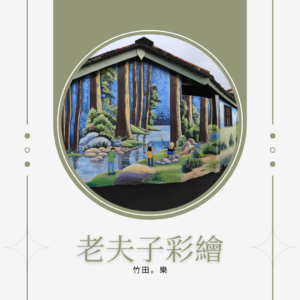
Old Master Q Murals
Strolling through Meilun Old Street, visitors can leisurely admire the magnificent Baroque-style buildings and the traditional Hakka red-tile houses, evoking memories of the area’s past prosperity. Meilun is home to the only officially authorized Old Master Q murals in Taiwan, featuring the world’s longest and largest mural. The murals were created by Professor Wang Ze, the second-generation cartoonist of Old Master Q and also a son-in-law of Meilun village. The mural was completed in two phases, in May 2015 and February 2022. Here, visitors can not only take photos with the iconic Old Master Q mural but also enjoy a rich and aromatic cup of Meilun coffee while leisurely wandering through the transformed Meilun Old Street.
